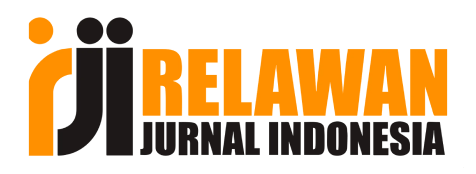Human Resources Management, Islamic Boarding Schools in Empowering Teachers in Jambi Province
DOI:
https://doi.org/10.38035/dijms.v6i2.3561Keywords:
Human Resource Management, Islamic Boarding School, Empowerment, TeacherAbstract
This study aims to analyze in depth about "Human Resource Management of Islamic Boarding Schools in Teacher Empowerment in Jambi Province (Case Study of Three Islamic Boarding Schools). This study uses a qualitative approach with data collection techniques using observation, interviews and documentation as supporting data. Data analysis techniques use qualitative techniques through domain analysis, taxonomy, and componential, and data is reduced, displayed and concluded. In the research process, the researcher is guided by the idea put forward by Fombrun, namely the process in Human Resource Management of Islamic Boarding Schools depends on selection, assessment, awards and development. The results of the study are that 1) Planning in these three Islamic Boarding Schools is adjusted to the needs of teachers and the number of male and female students; 2) The sources of teacher recruitment used in these three Islamic Boarding Schools are alumni of Islamic Boarding Schools, family and friends of teachers in the foundation only; 3) The types of training and development carried out are in the form of seminars, coaching in schools and foundations, further education, supervision by DIKNAS, training in developing teacher teaching methodology, MGMP (Subject Teacher Deliberation) schools, annual school work meetings, workshops; 4) Compensation and welfare of teachers in the three Islamic Boarding Schools vary. Some forms are also the same such as salary compensation, allowances, bonuses. However, in terms of nominal value, it differs between the three Islamic Boarding Schools. Based on the results of the study, it can be concluded that Human Resource Management of Islamic Boarding Schools in Teacher Empowerment in Jambi Province requires synergy from various policy makers.
References
Collings, D. G., Wood, G. T., & Szamosi, L. T. (2018). Human resource management: A critical approach. In Human resource management (pp. 1-23). Routledge.
Feisal, J.A. (2015). Reorientasi Pendidikan Islam. Jakarta: Gema Insani Press.
Hanggraeni, D. (2012). Manajemen Sumber Daya Manusia. Jakarta: Lembaga Penerbit Fakultas Ekonomi Universitas Indonesia.
Marwansyiah, S. (2012). Pengelolaan Sumber Daya Manusia dalam Organisasi. Bandung: Refika Aditama.
Minarni, E. W., Utami, D. S., & Prihatiningsih, N. (2017). Pemberdayaan kelompok wanita tani melalui optimalisasi pemanfaatan pekarangan dengan budidaya sayuran organik dataran rendah berbasis kearifan lokal dan berkelanjutan. JPPM (Jurnal Pengabdian dan Pemberdayaan Masyarakat), 1(2), 147-154.
Mondy, R. W., & Noe, R. M. (2005). Human Resource Management (9th ed.). Pearson Prentice Hall.
Pidarta, M. (2004). Manajemen Pendidikan Indonesia. Jakarta: PT. Asdi Mahasatya.
Sachari, A. (2007). Budaya visual Indonesia: membaca makna perkembangan gaya visual karya desain. Jakarta: Erlangga.
Yacub, M. (1998). Pondok Pesantren dan Pembangunan Masyarakat Desa. Bandung: Angkasa
Downloads
Published
How to Cite
Issue
Section
License
Copyright (c) 2024 Afif Fuadi, Muntholib Muntholib, Kasyful Anwar Us, Arlen Mardayanti

This work is licensed under a Creative Commons Attribution 4.0 International License.
Authors who publish their manuscripts in this journal agree to the following conditions:
- The copyright on each article belongs to the author(s).
- The author acknowledges that the Dinasti International Journal of Management Science (DIJMS) has the right to be the first to publish with a Creative Commons Attribution 4.0 International license (Attribution 4.0 International (CC BY 4.0).
- Authors can submit articles separately, arrange for the non-exclusive distribution of manuscripts that have been published in this journal into other versions (e.g., sent to the author's institutional repository, publication into books, etc.), by acknowledging that the manuscript has been published for the first time in the Dinasti International Journal of Management Science (DIJMS).
















































